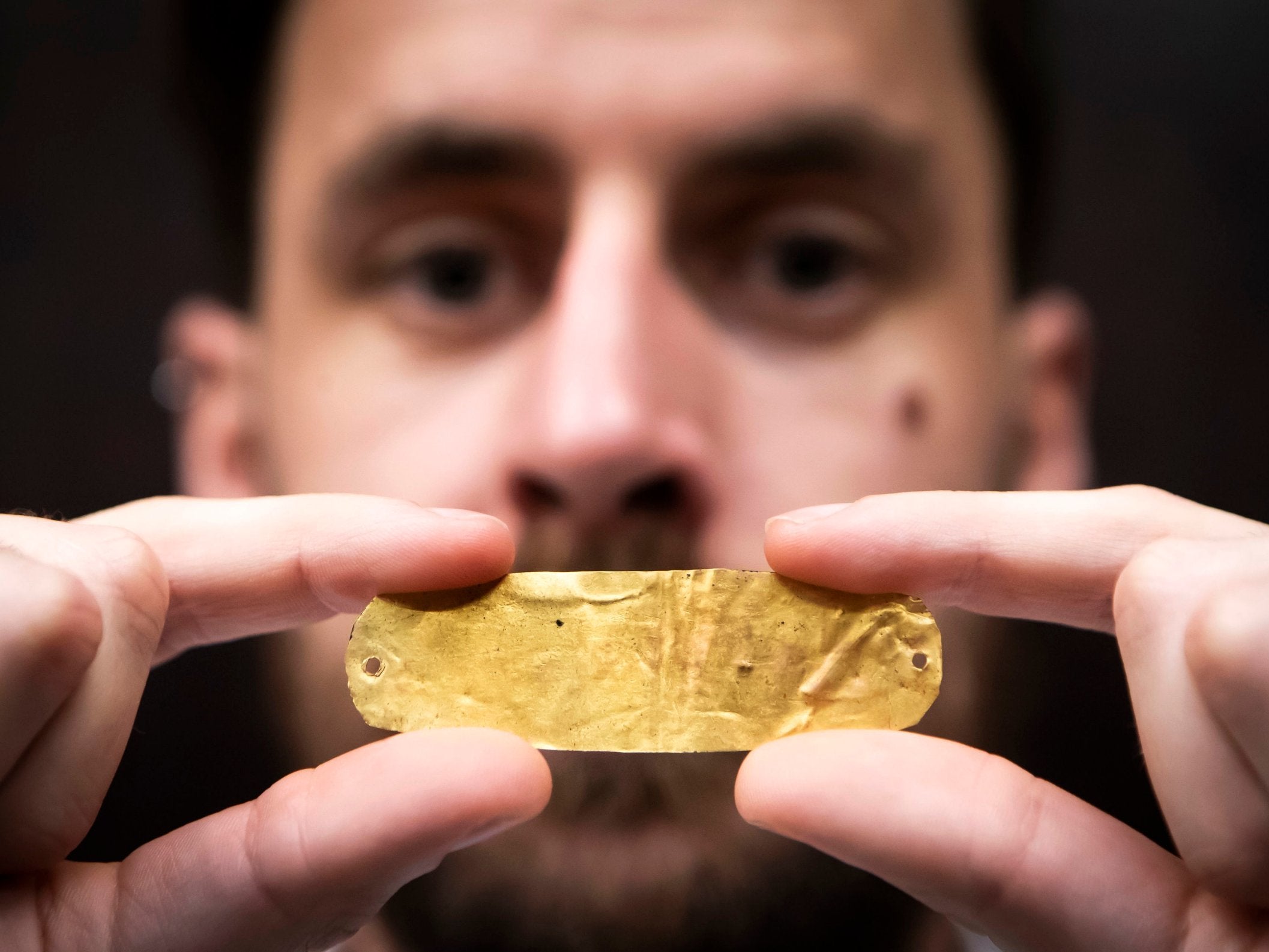Mysterious gold relic finally identified after baffling scientists for almost 150 years
Plate uncovered alongside female skeleton beneath York station in 1872

Your support helps us to tell the story
From reproductive rights to climate change to Big Tech, The Independent is on the ground when the story is developing. Whether it's investigating the financials of Elon Musk's pro-Trump PAC or producing our latest documentary, 'The A Word', which shines a light on the American women fighting for reproductive rights, we know how important it is to parse out the facts from the messaging.
At such a critical moment in US history, we need reporters on the ground. Your donation allows us to keep sending journalists to speak to both sides of the story.
The Independent is trusted by Americans across the entire political spectrum. And unlike many other quality news outlets, we choose not to lock Americans out of our reporting and analysis with paywalls. We believe quality journalism should be available to everyone, paid for by those who can afford it.
Your support makes all the difference.The origin of a mysterious golden relic has been identified after leaving archaeologists baffled for almost 150 years.
The small, flat golden plate was uncovered alongside a female skeleton and a coin at a grave site beneath York station in 1872.
After more than a century of intrigue, a team at Yorkshire Museum - alongside experts from around the world - have revealed it is a Roman mouth plaque dating from the third century.
The 1,800-year-old plaque is the only example of its kind in Britain, and one of only 23 discovered worldwide.
The plaque would be used to cover the mouth of a dead body, and experts said it would usually be used by a person of high status.
But mystery still surrounds how and why it was used, with theories including it being a magical or medicinal amulet to protect the person in death, or a sinister talisman to silence or restrain them.
Yorkshire Museum assistant curator of archaeology Adam Parker said he is planning to carry out more tests on the female skeleton to shed more light on the mouth plaque itself.
This could include ancient DNA testing and stable isotope analysis to try to establish where the woman was from.
Mr Parker said most of the other mouth plaques were found in the far eastern parts of the former Roman Empire in Syria, Turkey and Crimea, apart from one found in France.
He added: "The hope is if the skeleton could be proved to have an eastern link, where the other examples of the practice are, that would show a level of mobility of this unusual practice from one end of the empire to the other."
The woman is believed to have been between 18 and 30 when she died, and along with the mouth plaque she was buried with a fake silver coin dated between 202 to 210.
The coin, which was made of copper with a silver wash over the top, had the face of Septimius Severus on one side and Fortuna, the goddess of luck on the other.
Severus was Roman Emperor from 193 until his death in York in 211, but it is not clear whether the woman was buried during this period or later.
Additional reporting by PA
Join our commenting forum
Join thought-provoking conversations, follow other Independent readers and see their replies
Comments